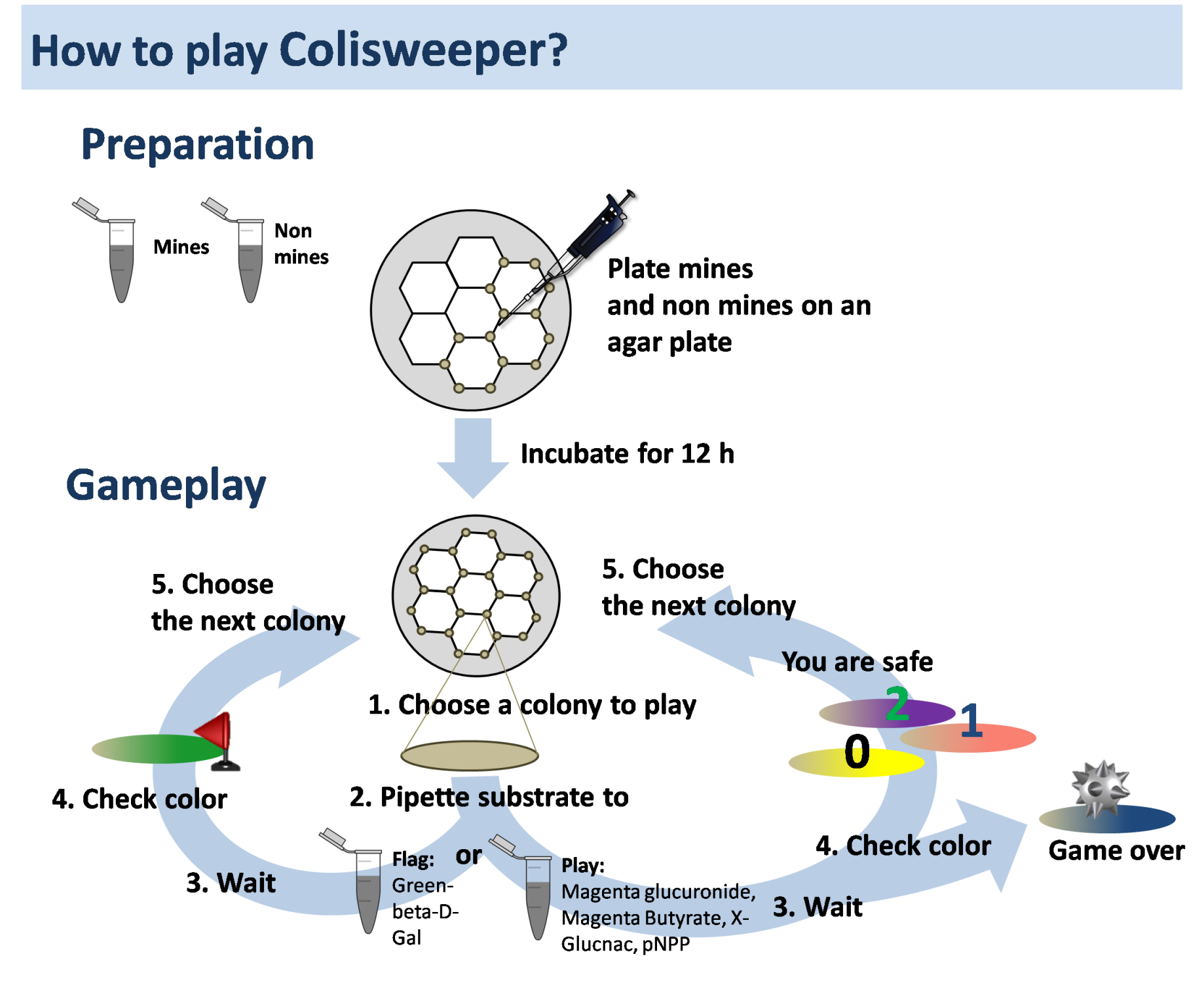Team:ETH Zurich/Play
From 2013.igem.org
| Line 9: | Line 9: | ||
<br><b>a mine colony</b>, which when played reveals the mine color and the game is over | <br><b>a mine colony</b>, which when played reveals the mine color and the game is over | ||
<br><br>You also have the option to flag a mine - if you are certain that a colony is a mine, you can flag it using a second substrate.<br><br> | <br><br>You also have the option to flag a mine - if you are certain that a colony is a mine, you can flag it using a second substrate.<br><br> | ||
| - | If we plated the bacterial colonies similar to squares in the computer game, the grid becomes more complex. In this case, each colony has a possibility to have eight mine colonies adjacent to it. To mimic | + | If we plated the bacterial colonies similar to squares in the computer game, the grid becomes more complex. In this case, each colony has a possibility to have eight mine colonies adjacent to it. To mimic the same pattern in a biological setting will be quite complicated. Hence we decided on a hexagonal honeycomb-like pattern, where colonies are placed at all edges of the hexagon, except the center. In the hexagonal grid, the number of mine colonies around a chosen colony is restricted to only one, two or three. To plate the field, liquid cultures of mine and non-mine cells are grown to an OD<sub>600</sub> of 0.5, then, using a pipette, 1.5μl of liquid culture are placed according to the grid.</p> |
<br clear="all"/> | <br clear="all"/> | ||
Revision as of 15:29, 4 October 2013
How to play the game?

Inspired by the computer game Minesweeper, we aspire to incorporate all the same features and rules in the biological version of the game. To replicate the "mouse click" in the computer game, you can add a substrate to the colony of your choice which leads to a colorful enzyme-susbtrate reaction. The agar mine field consists of colonies which can be one of the following:
a non-mine colony, which will display the "safe colour" when played
a non-mine colony located close to one or two mines, which on addition of a multi-substrate reveals the number of mines in the vicinity of this colony
a mine colony, which when played reveals the mine color and the game is over
You also have the option to flag a mine - if you are certain that a colony is a mine, you can flag it using a second substrate.
If we plated the bacterial colonies similar to squares in the computer game, the grid becomes more complex. In this case, each colony has a possibility to have eight mine colonies adjacent to it. To mimic the same pattern in a biological setting will be quite complicated. Hence we decided on a hexagonal honeycomb-like pattern, where colonies are placed at all edges of the hexagon, except the center. In the hexagonal grid, the number of mine colonies around a chosen colony is restricted to only one, two or three. To plate the field, liquid cultures of mine and non-mine cells are grown to an OD600 of 0.5, then, using a pipette, 1.5μl of liquid culture are placed according to the grid.
The game play by the player
To play Colisweeper, the gamemaster has to plate mines and non mines on an agar plate 12 h previous to the actual game. After 12 h of incubation the game is ready to be played. Therfore the player has to pipette colorless substrates on a colony on the agar minefield. A single move of pipetting would require the player to choose between two colorless substrates. If you want to "play" a colony, the multi-susbtrate mix is added, this will reveal the identity of the colony- as in the number of mines surrounding a non-mine. If the colony turns yellow, red or vioelet no, one or two mines are next to the "played" colony, respectively. You are save and can perform your next move. However if the colony turns blue, you hit the mine and the game is over. If you want to flag a colony, the single colorless substrate is pipetted onto a colony if the player is certain of a mine colony. The colony turns green. Addition of either substrates produces a defined colored product within minutes, allowing identification of the played colony and the number of mines surrounding it.
 "
"






